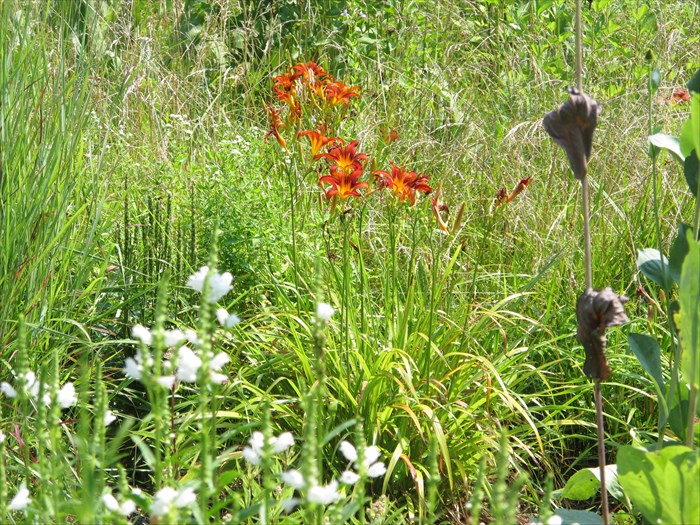Garden in the abstract

This image is of a type I'm fond of. Not abstract, exactly ... but a view of the garden that isn't possible with just the human eye. These "abstract" compositions, chance arrangements of plants and objects, rely on the camera's inability to see in three dimensions ... and, of course, my ability to frame what I see with a camera, not chance at all; conscious selection.Only when these diagonal lines, flower blobs, complex shapes are cast onto a flat plane does this quality emerge. It helps to have a screen of large plants in the foreground, preferably large plants with striking character and presence (in this case Rudbeckia maxima and two kinds of Silphium). I enjoy these two-dimensional views, probably as much as I do sitting in the garden.
I enjoy these two-dimensional views, probably as much as I do sitting in the garden.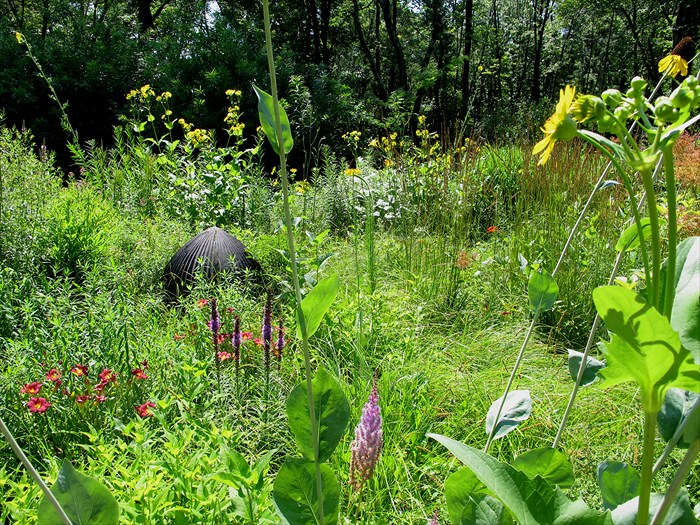 Is this a valid way to enjoy the experience of the garden? Silly question. Of course. Though it's a solitary pleasure and very unlike sitting in the garden.
Is this a valid way to enjoy the experience of the garden? Silly question. Of course. Though it's a solitary pleasure and very unlike sitting in the garden.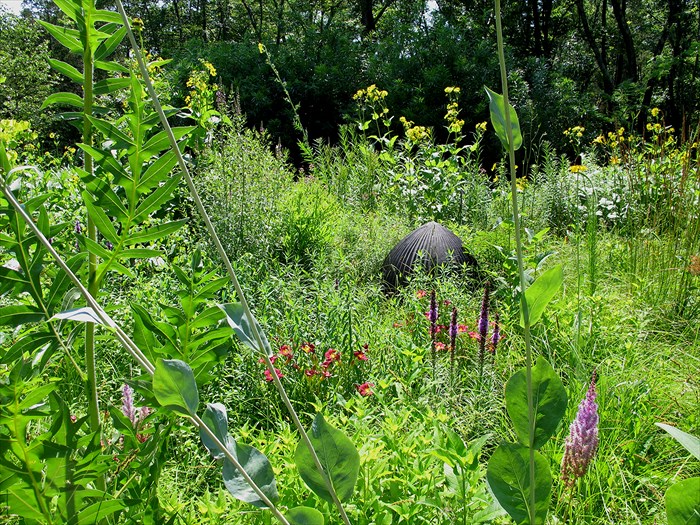 After looking at these images, I went outside and walked through this part of the garden several times, observing carefully. The experience is entirely different when you see these scenes with no photographic frame, and in three dimensions. You become part of the scene, moving, changing the view at will.
After looking at these images, I went outside and walked through this part of the garden several times, observing carefully. The experience is entirely different when you see these scenes with no photographic frame, and in three dimensions. You become part of the scene, moving, changing the view at will.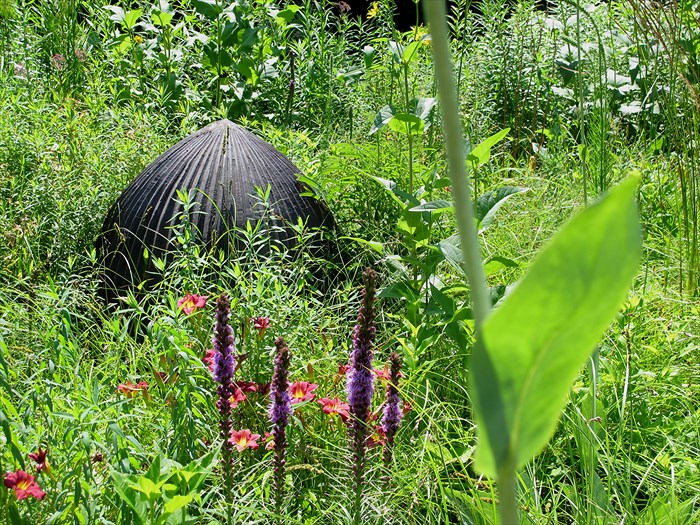 These images have that "flat" quality of Japanese wood cuts, almost like printed fabric. They're moments frozen in time, mementos of passing instants, at their best with a story to tell of composition, or the passage of life, perhaps a paean to the sun.
These images have that "flat" quality of Japanese wood cuts, almost like printed fabric. They're moments frozen in time, mementos of passing instants, at their best with a story to tell of composition, or the passage of life, perhaps a paean to the sun.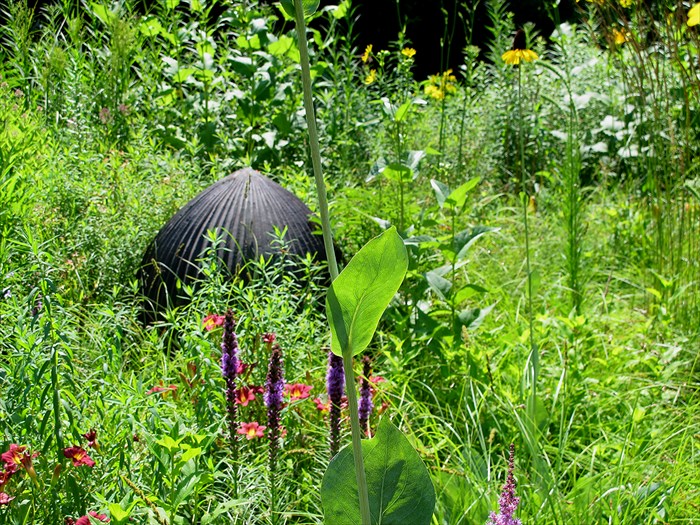 Here's another scene with a similar two-dimensional effect. Here willows - silvery Salix 'Britzensis' - serve as the foreground screen.
Here's another scene with a similar two-dimensional effect. Here willows - silvery Salix 'Britzensis' - serve as the foreground screen.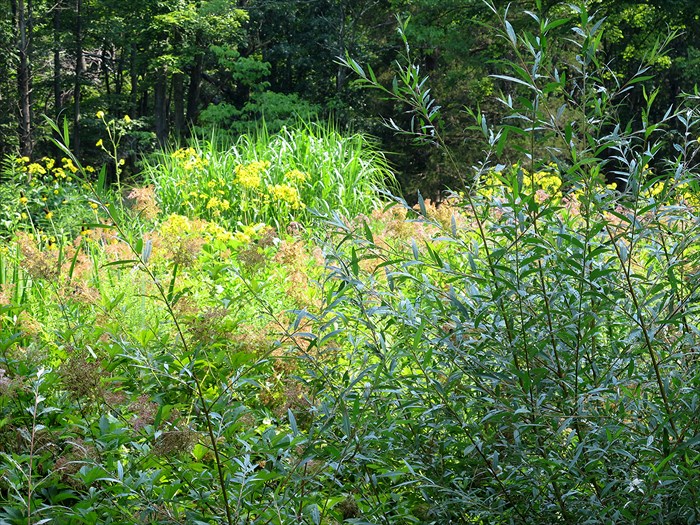 And another ... Physostegia as the screen ...
And another ... Physostegia as the screen ...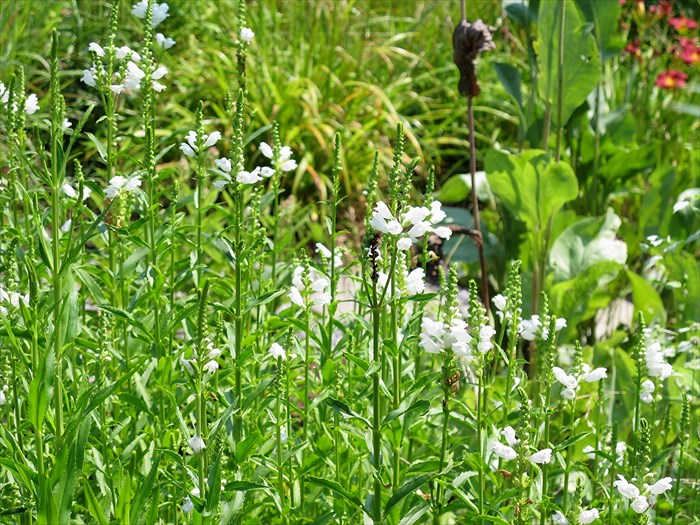 ... and another.
... and another.